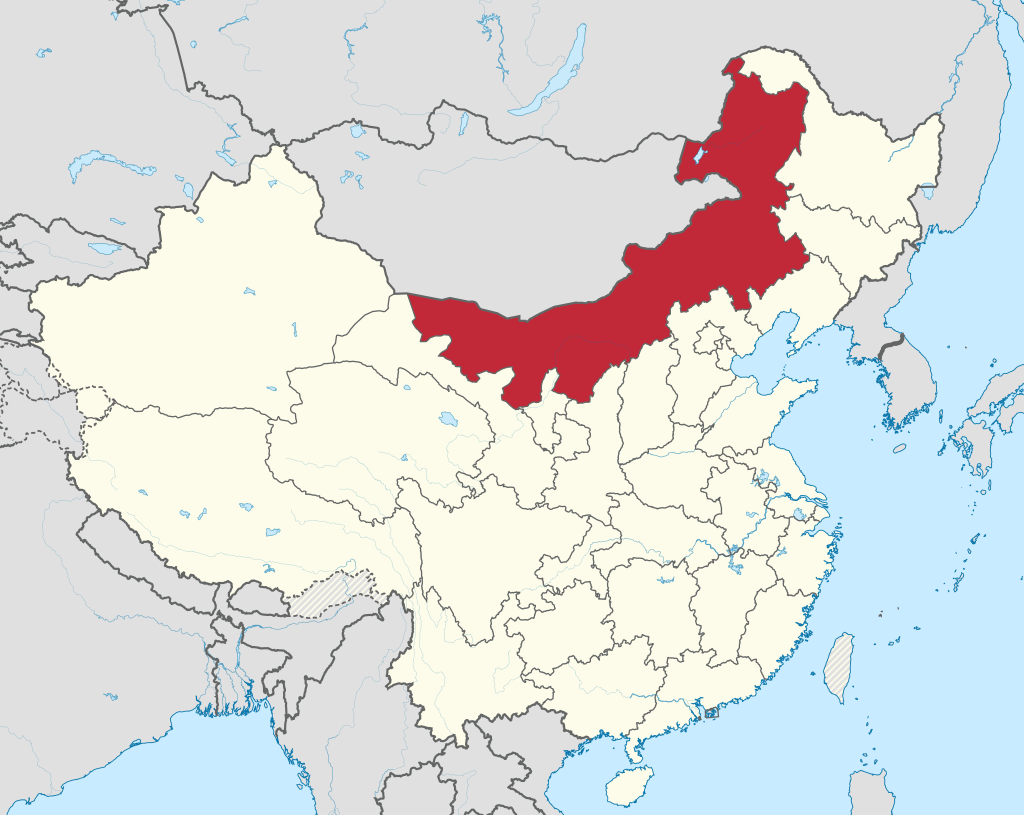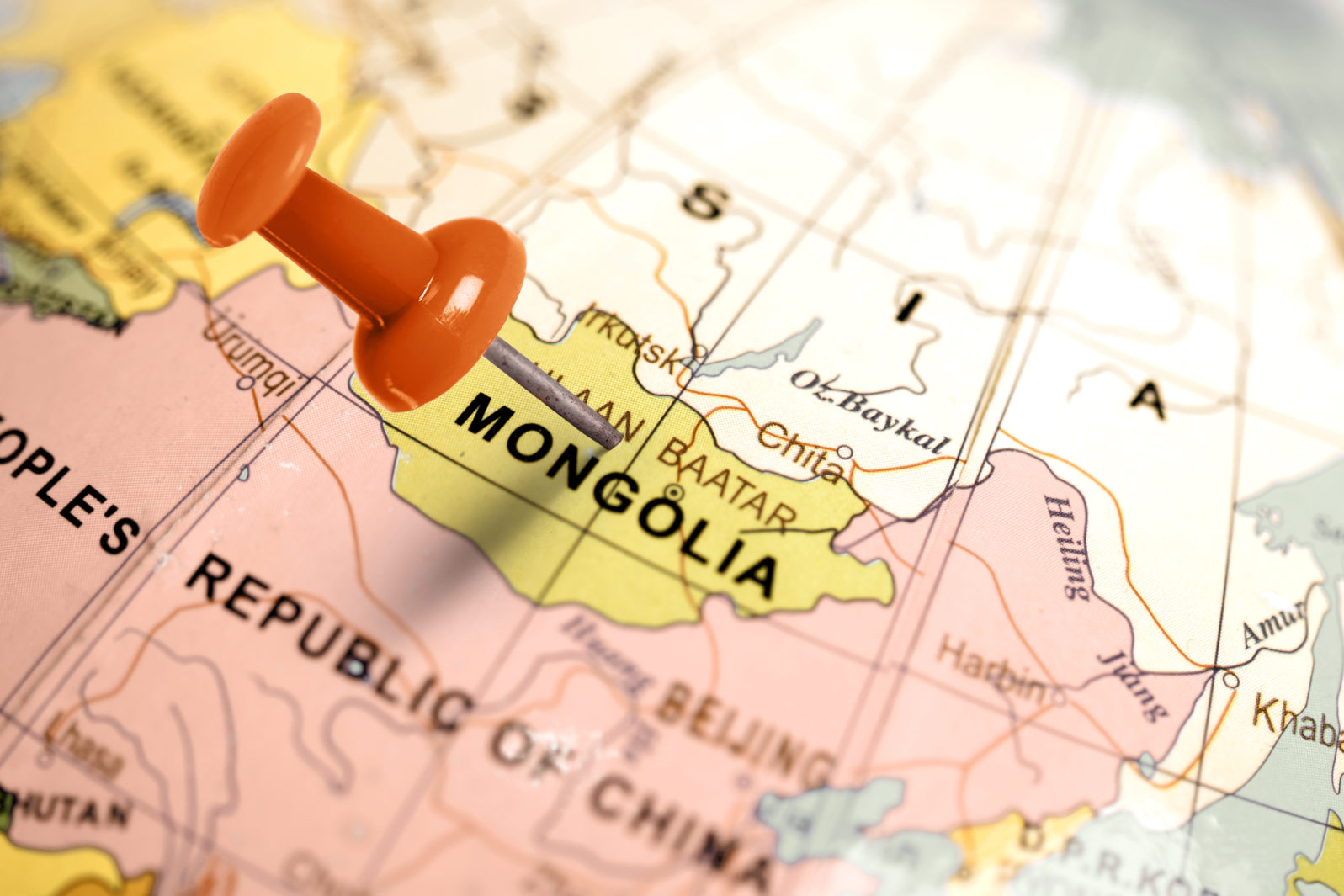High-Tech Suppression of China’s Mongol Region Provokes Protests
But Mongolian protesters against Chinese-dominated schools are threatened with loss of social credit, which means no jobs or loansChina is removing the Mongolian language and culture from the curriculum and textbooks in Inner Mongolia (see outline map), an autonomous region in China. In August, leaked government documents showed that language and literature, civics, and history will be taught in Mandarin rather than Mongolian in schools where Mongolian is the primary language.
Additionally, the new textbooks replace stories about historic Mongolian heroes with Chinese ballads and expunge a popular folk verse that expresses pride in the Mongolian culture and language.

In response, many parents in Inner Mongolia (called Southern Mongolia locally) have been keeping their children from attending school on September 1. In retaliation, state authorities threaten their jobs and social credit status:
Southern Mongolia has quickly become a police state again in the past few days as the tension has risen between the government and the Mongolians who are about to be deprived of their last symbol of national identity—the Mongolian language,” a blogger named Nasandelger said in a WeChat group recently formed in response to the Chinese Central Government’s plan for replacing Mongolian with Chinese as the language of instruction in Southern Mongolia.
“Social media crackdown intensifies as Southern Mongolian protests escalate” at Southern Mongolian Human Rights Information Center
As in Xinjiang, Tibet, and Hong Kong, technology has been used as both a means of suppression by the Chinese Communist Party (CCP) and a tool for garnering support by Mongolians, reaching outside of China’s borders.
Technology as a tool of suppression of Mongolian culture
In June, Ge Weiwei, a high-ranking Communist Party official, visited the city of Tangliao in eastern Inner Mongolia and spoke with hundreds of primary and secondary teachers at a secret meeting about changes to the school curriculum, termed “bilingual education.” The teachers were told not to discuss the meeting online and they signed a non-disclosure agreement. Government documents were, however, leaked online and once their substance was known, parents called for boycotting school on September 1. Much of the discussion took place on Bainuu, the only Mongolian language social media site allowed in China, as well as on Chinese social media sites WeChat and Weibo.
On August 23, 400,000 users from Inner Mongolia could not access chat groups on Bainuu. Several days later, the timelines and walls of Bainuu users were no longer available. All posts on WeChat and Weibo on Mongolian language or “bilingual education” were censored, making it difficult for people outside of Inner Mongolia to find information on protests.
Over 450 WeChat users are said to have been warned by authorities. The CCP has used this kind of “communication blackout” in Xinjiang and other regions to prevent the mobilization of target groups.
At least twenty-three have been detained for “flagrantly insulting a deceased former leader of the country” and for “sharing videos in a WeChat group to obstruct the implementation of the national textbooks policy,” according to ABC News:
The 23 detentions were across eight banners, the regional word for counties, according to an Associated Press tally of nine local police reports over the past several days. The reasons range from “organizing and collecting signatures for a petition” to “picking quarrels and stirring up trouble.”…
The local government is also exerting pressure in other ways. Authorities in Zhenglan banner announced Saturday that they had suspended two members of the ruling Communist Party without pay for failing to carry out the policy.
Huizhong Wu, “China Detains 23 in Crackdown on Inner Mongolia Protests” at ABC News
Despite the government’s efforts at censoring social media, over 300,000 students across Inner Mongolia were not in class on September 1. In Naiman Banner (i.e., County), for example, of 1,000 Mongolian students, 40 registered for school and only 10 showed up the first day of class.
The Chinese government responded by threatening the parents with loss of jobs and social credit score. Authorities in Xilingol Banner said parents would lose access to government subsidies and students would not be able to take the college entrance exam. There would also be a five-year moratorium for bank loans if parents did not send their children back to school by September 17. It worked:
Demonstrations against the program appear to have been largely suppressed. More than 90% of children who had boycotted school in Xilingol were back in class — including his own, said Gangbater, who asked not to use his full name for fear of retribution from authorities.
“If you don’t send the kids [to school], they take away your jobs,” said Gangbater. “You can’t get subsidies or loans from the banks. They put you on a blacklist. They are arresting the people who signed petitions. They have all kinds of methods.”
Alice Su, “Why Is China Cracking Down on Its ‘Model Minority’?” at Los Angeles Times (September 23, 2020)
Several parents are under 24-hour surveillance for what they said online regarding the “bilingual education” and protests. Others have been blacklisted, which decreases their social credit score. Since surveillance cameras are commonplace in Inner Mongolia, as in other provinces, protesters risk being identified using facial recognition technology.
Is This Legal?
Inner Mongolia Autonomous Region was once hailed as the model for ethnic autonomous regions in China. Founded in 1947, it was the first of China’s ethnic autonomous regions. Mao Zedong promised the ethnically Mongolian people that they could continue to have their cultural practices and way of life while benefiting from China’s socialist system. China, in turn, would benefit from the wealth of natural resources in Inner Mongolia.
However, as with Xinjiang and Tibet, two of China’s other autonomous regions, the ethnic minorities in Inner Mongolia have encountered suppression of their culture and indoctrination of their children. Many Mongolian schools have shut down, and many Mongolian herders have had their land confiscated for mining. Now, Mongolians see the replacement of their language as another way the Chinese government is suppressing their culture.
Recognized minorities’ cultures are, in theory, protected under the Chinese Constitution and the Regional Ethnic Minority Law. That protection was to include allowing education in the minority groups’ language. But, as pointed out in the Los Angeles Times by James Leibold, a China scholar at La Trobe University in Australia, the new regulations are a broader policy change that gained momentum after a speech by President Xi Jinping in 2014:
The constitution has not changed. But in practice, China’s policies have abandoned the original promises of autonomy and moved toward assimilation by force. The Chinese state frames this move as a ‘civilizing’ drive, Leibold said, in which minorities assumed to be ‘backward’ are molded into supposedly superior Han Chinese ways of life.
Alice Su, “Why Is China Cracking Down on Its ‘Model Minority’?” at Los Angeles Times (September 23, 2020)
Not everyone within the CCP agrees with this practice. In Beijing, several people signed a petition, spearheaded by an elite party member, against the government’s actions in Inner Mongolia. Several signatories had spent time living in Inner Mongolia through a work-study program.
Technology as a Tool for Communication
The CCP’s actions have spurred responses in independent Mongolia, just north of China. Mongolia is a democratic country whose citizens enjoy more freedom than Chinese citizens. That freedom includes internet access to social media platforms like Facebook and Twitter. According to the Southern Mongolian Human Rights Information Center, “ In solidarity with those in Southern Mongolia, people from all walks of life in the independent country of Mongolia, are joining the protest to urge the Chinese Government to withdraw the new policy that limits children’s language access.”

Many Inner Mongolians have sent videos and posts to their friends and relatives in the country of Mongolia, who post them to Twitter and Facebook. Their stories have led to protests and calls for a response at many Mongolian embassies and consulates around the world.
Unfortunately, there is little that the Mongolian government can do to help ethnically Mongolian people in China. According to The Diplomat, China receives 80% of Mongolia’s exports, making the country too economically tied to China to risk angering the Chinese government. That is not an unfounded fear. In 2016, when Mongolia hosted the Dalai Lama, China responded by placing economic sanctions on Mongolian exports.
Many people have called the Chinese government’s actions in Tibet, Xinjiang, and Inner Mongolia “cultural genocide.” But Xi Jinping, in his 2014 speeches about ethnic groups, emphasized the need for a unified China, which means a unified cultural identity. For the Chinese government, that involves suppressing unique aspects of a minority groups’ culture, including their religion, practices, and language, in order to promote unity and the “China Dream.”
Note: The outline map of Inner Mongolia is courtesy TUBS (CC BY-SA 3.0)
You may also find these articles by Heather Zeiger on China and ethnic minorities of interest:
Mulan: Disney talks freedom at home, toes the line in China.
Films we see get altered in subtle and not-so-subtle ways to conform to the requirements of CCP propaganda. Ethnocentrism is very much part of Chinese censorship. China does not allow Han Chinese people to be cast as villains or even to be portrayed as weak or beat up by a foreigner.
and
China: Sophisticated surveillance decides who gets sent to Uyghur camps. The leak of documents from police in Karakax County in Xinjiang reveal the details of everyday life that can send a Uyghur to the camps.
